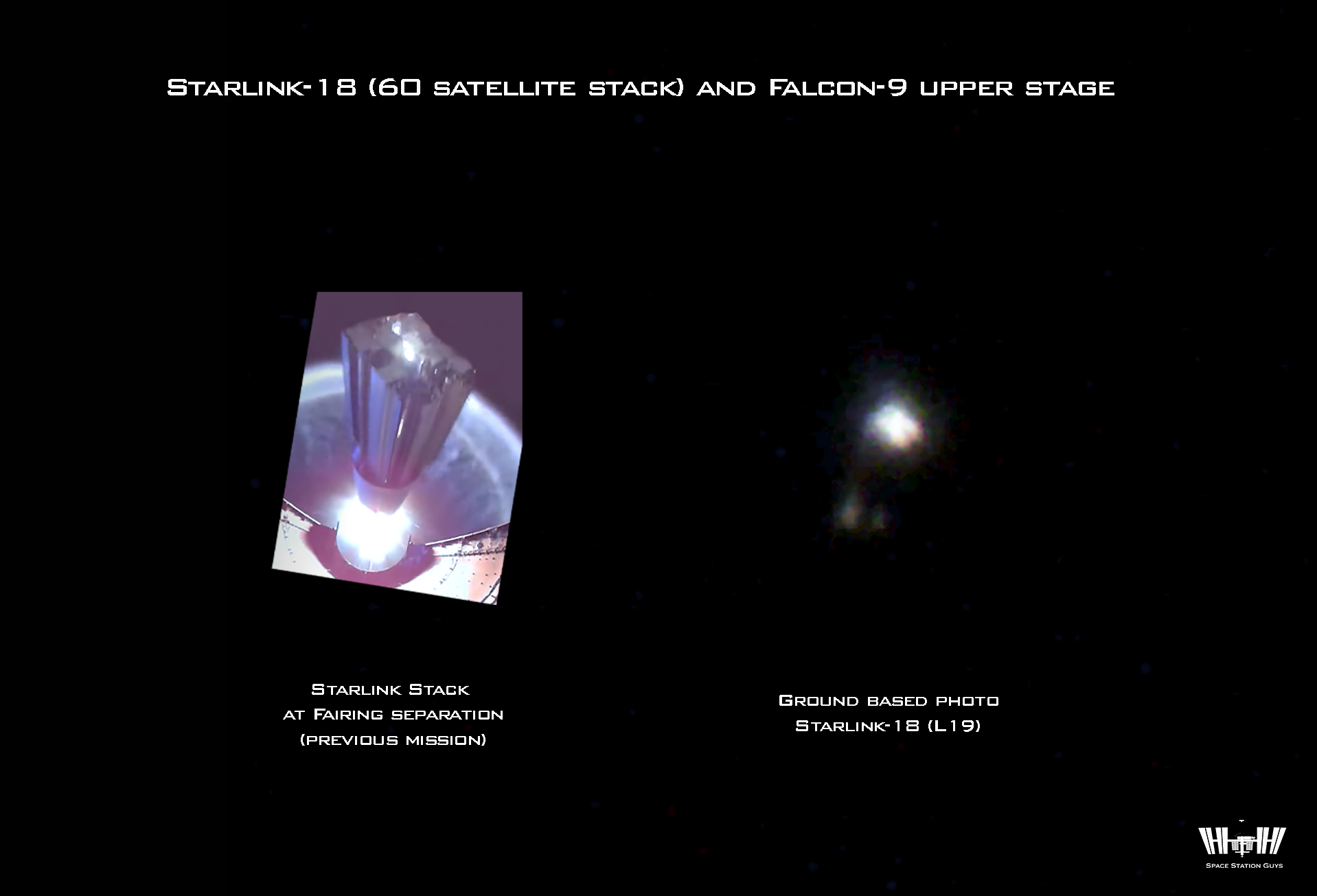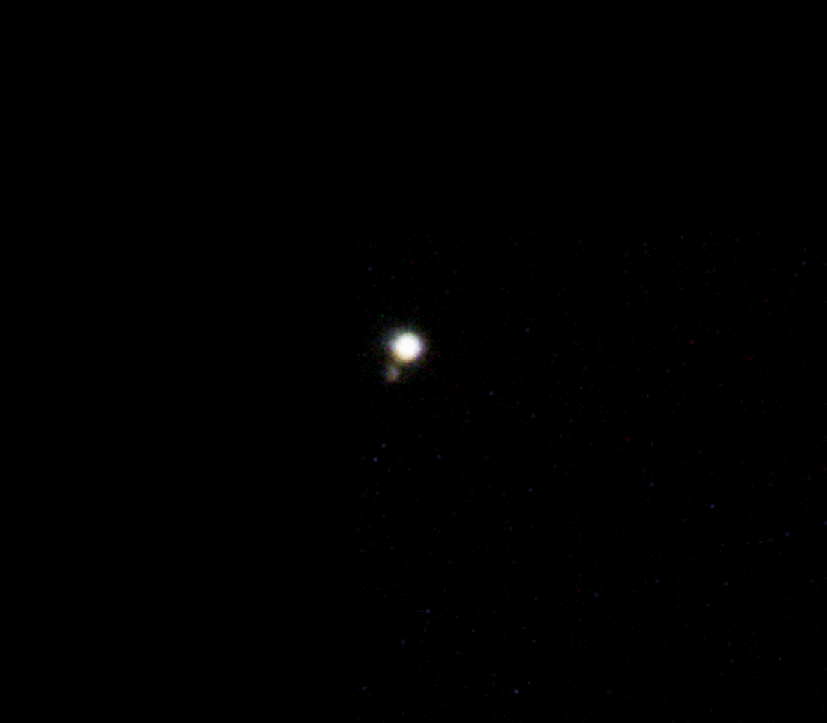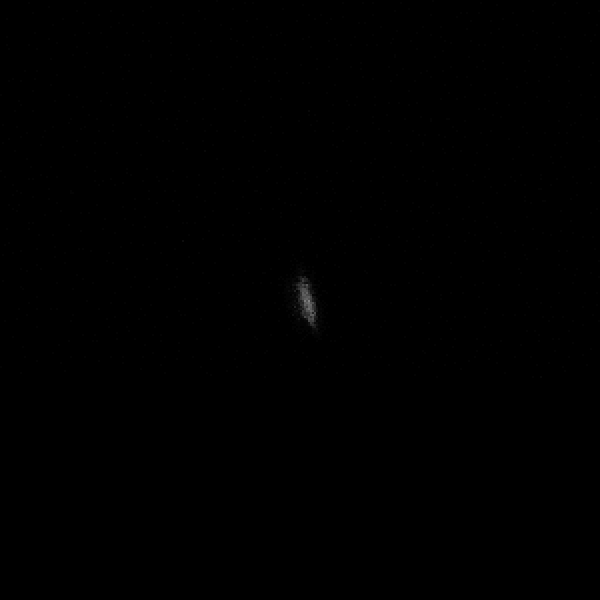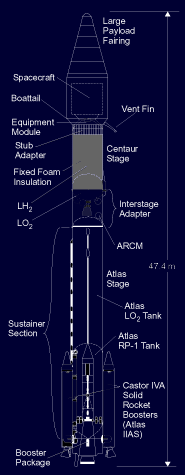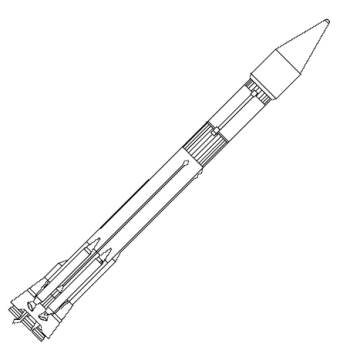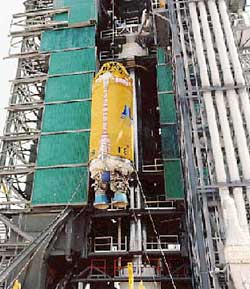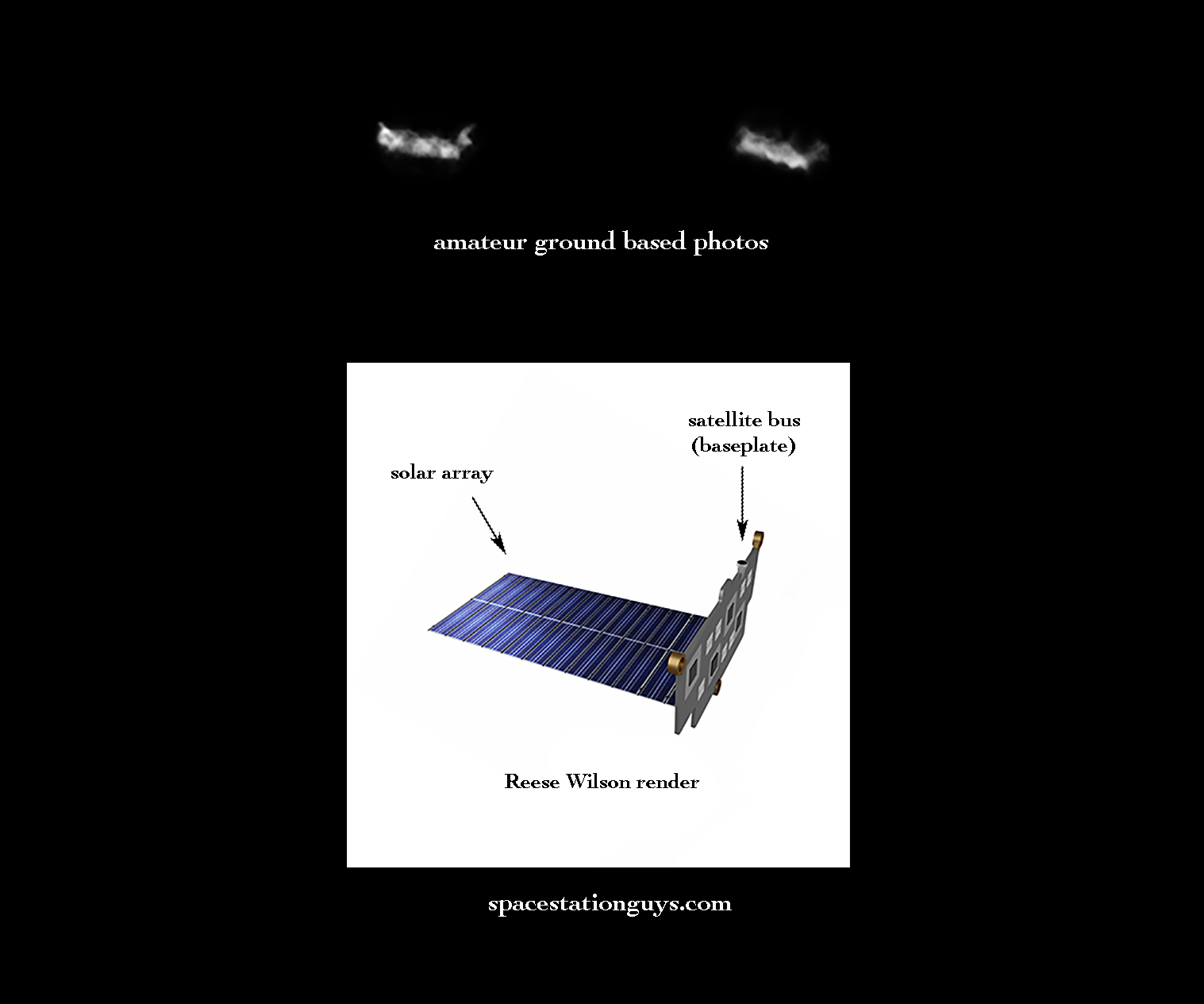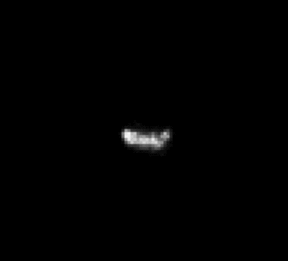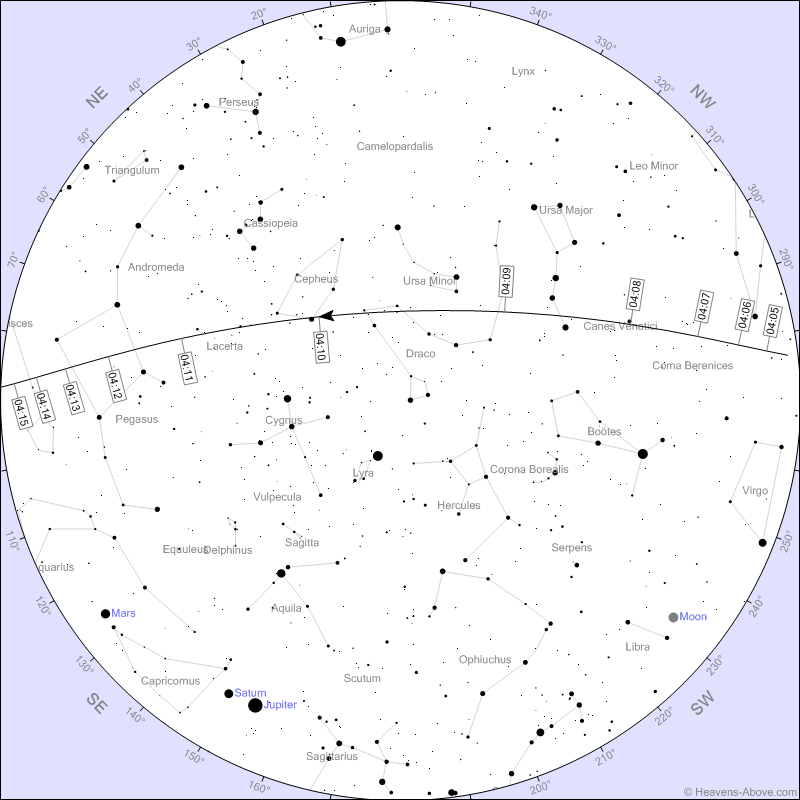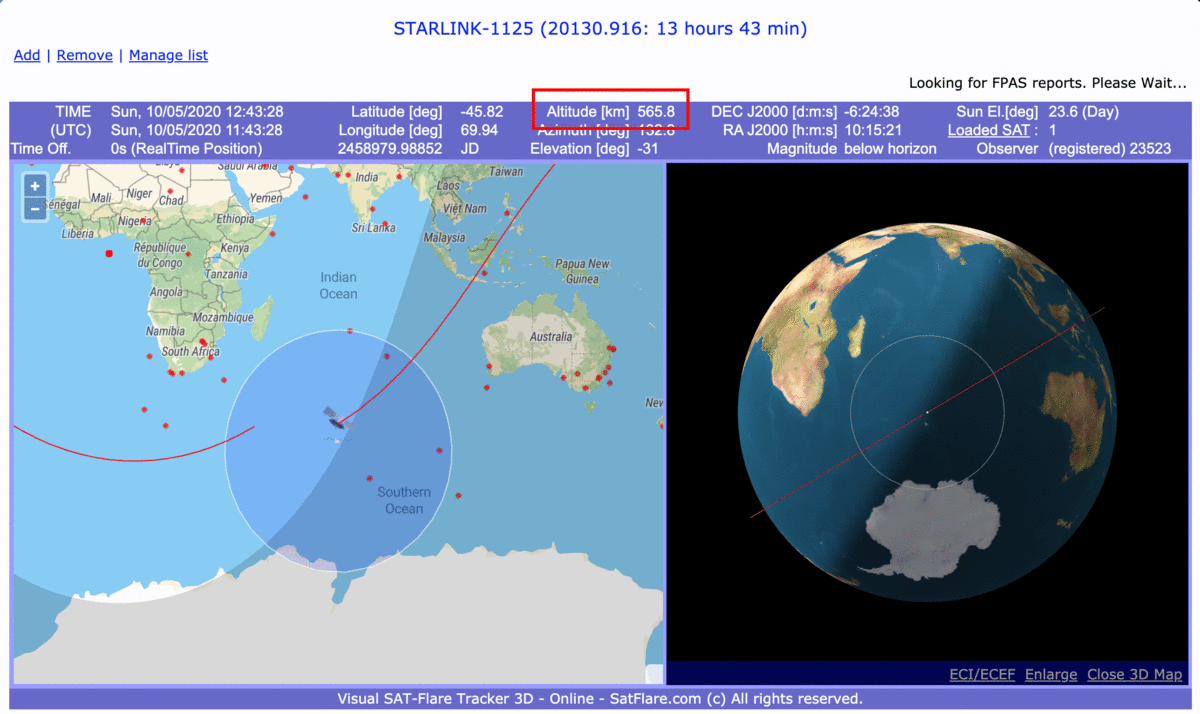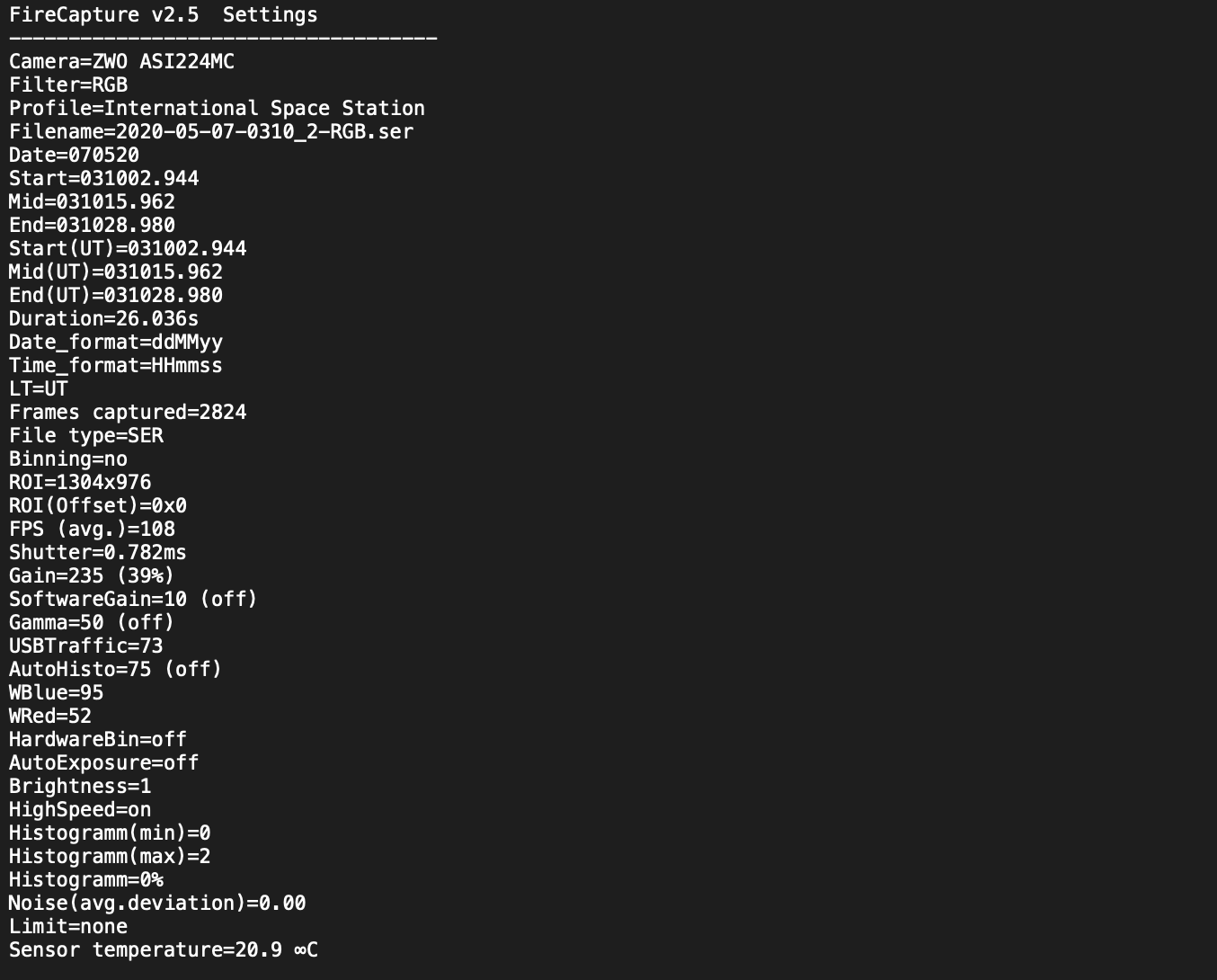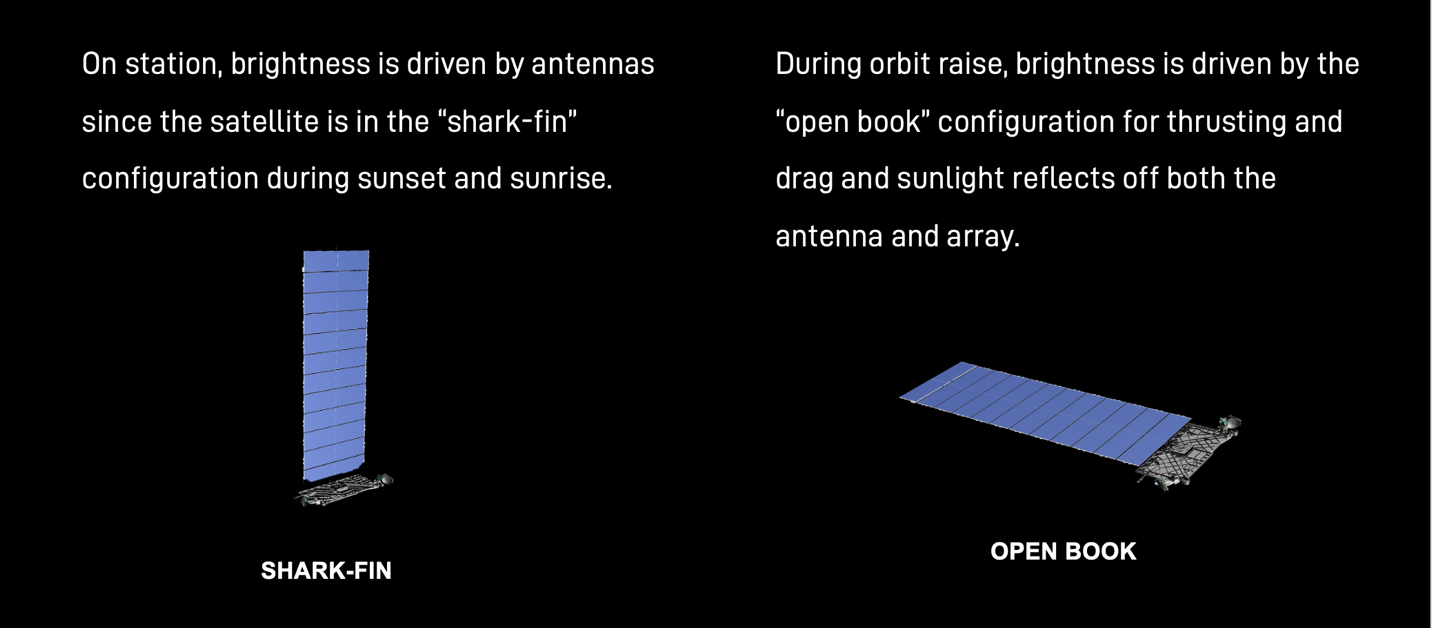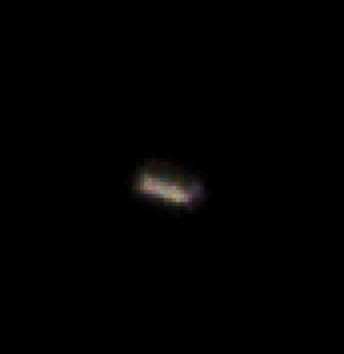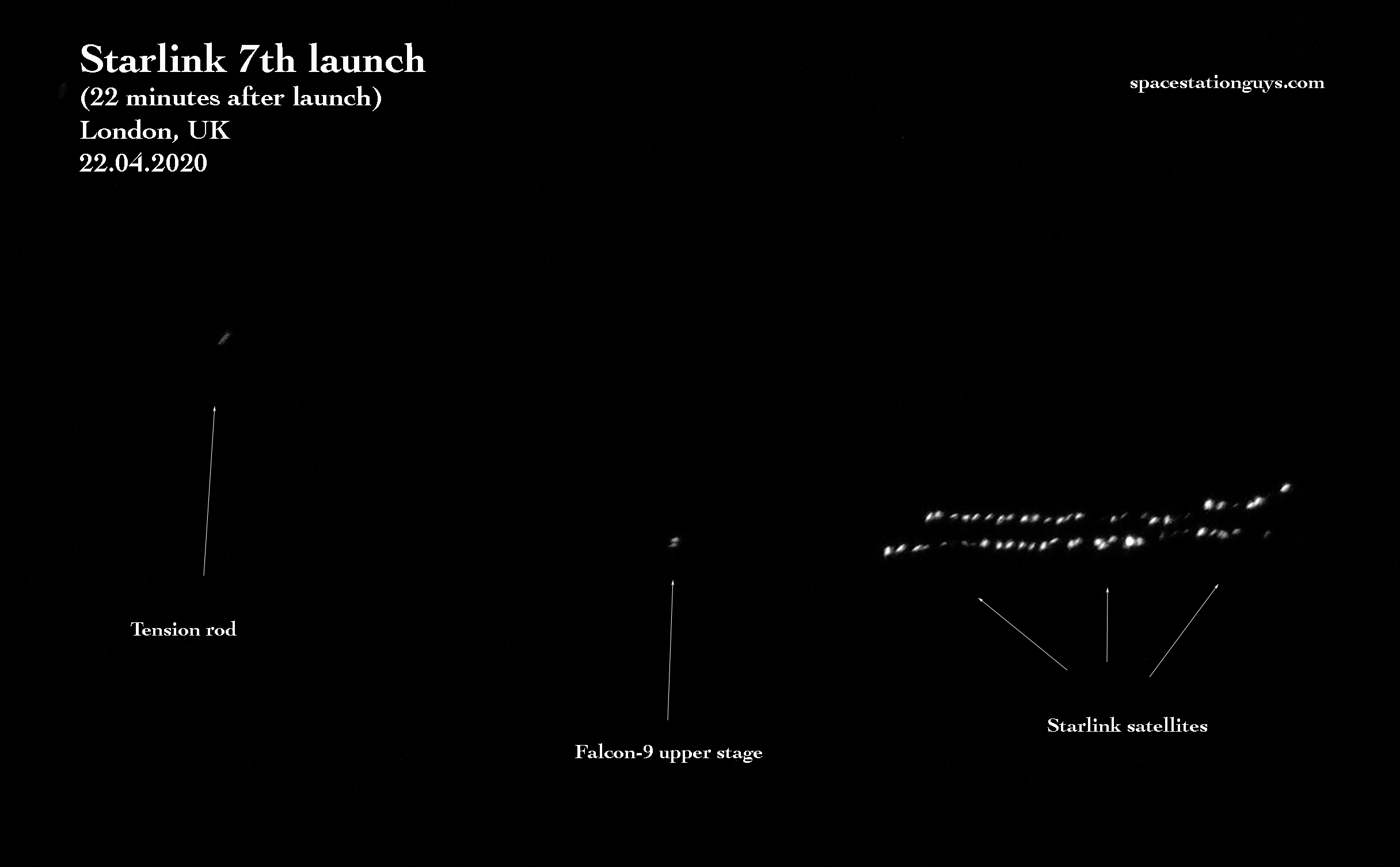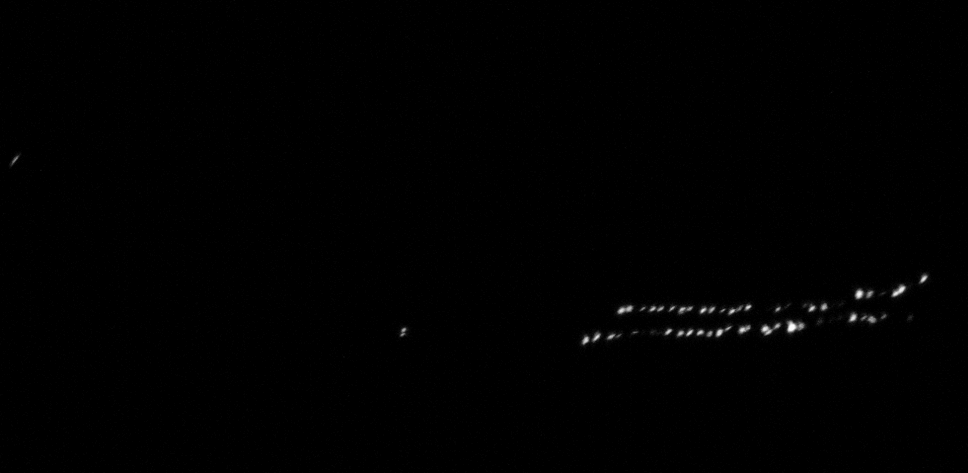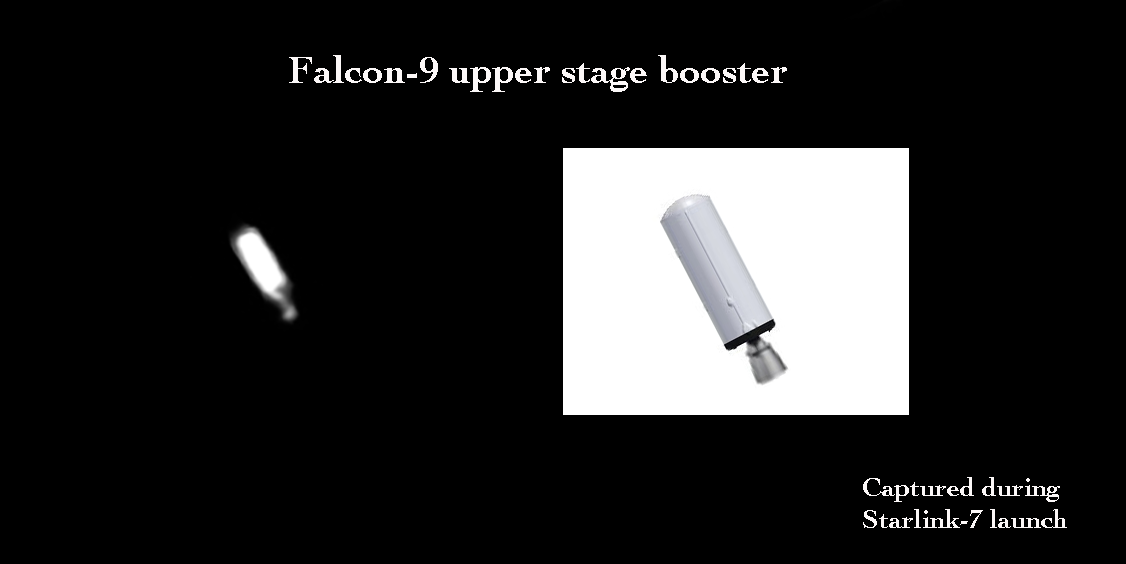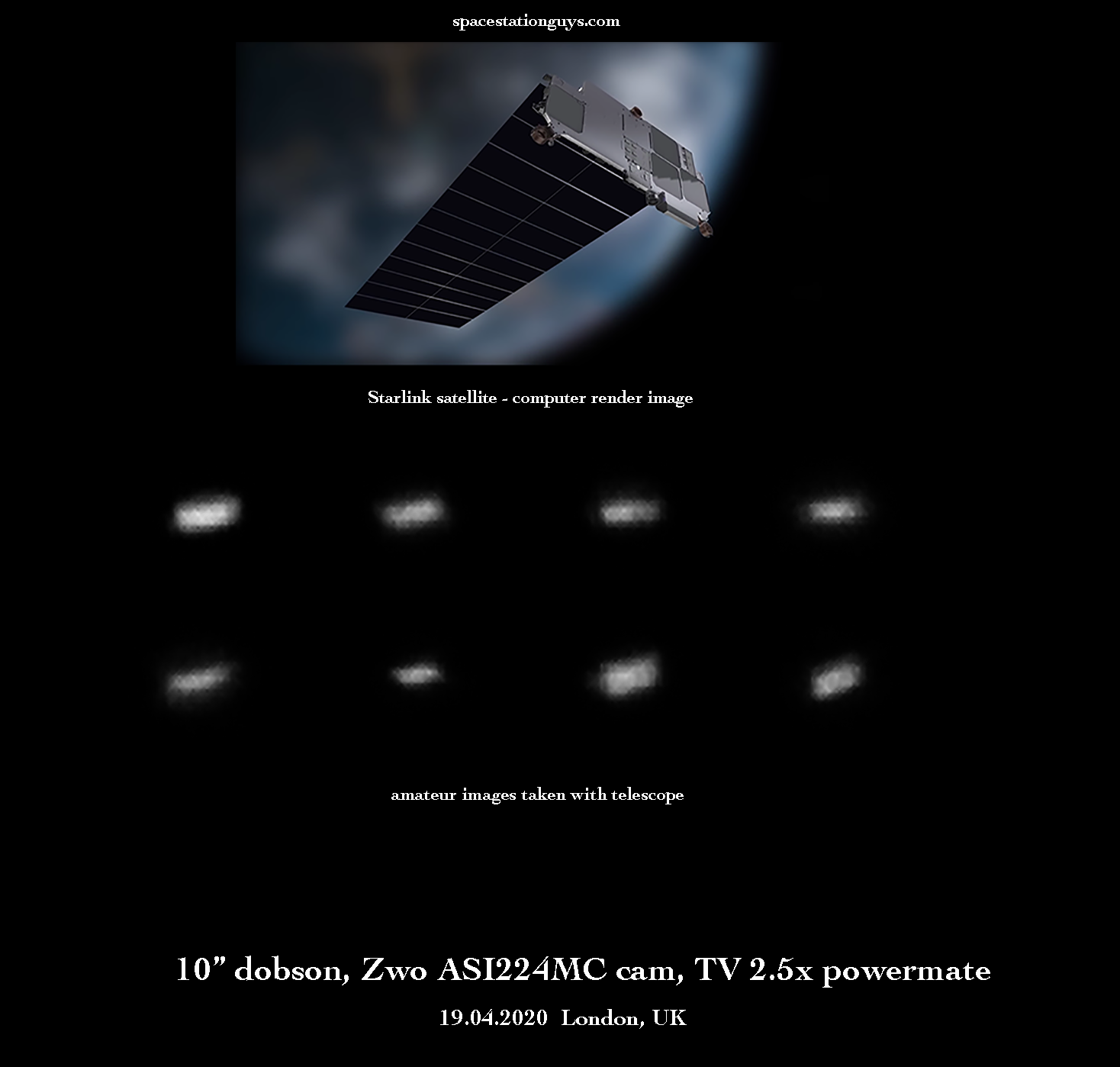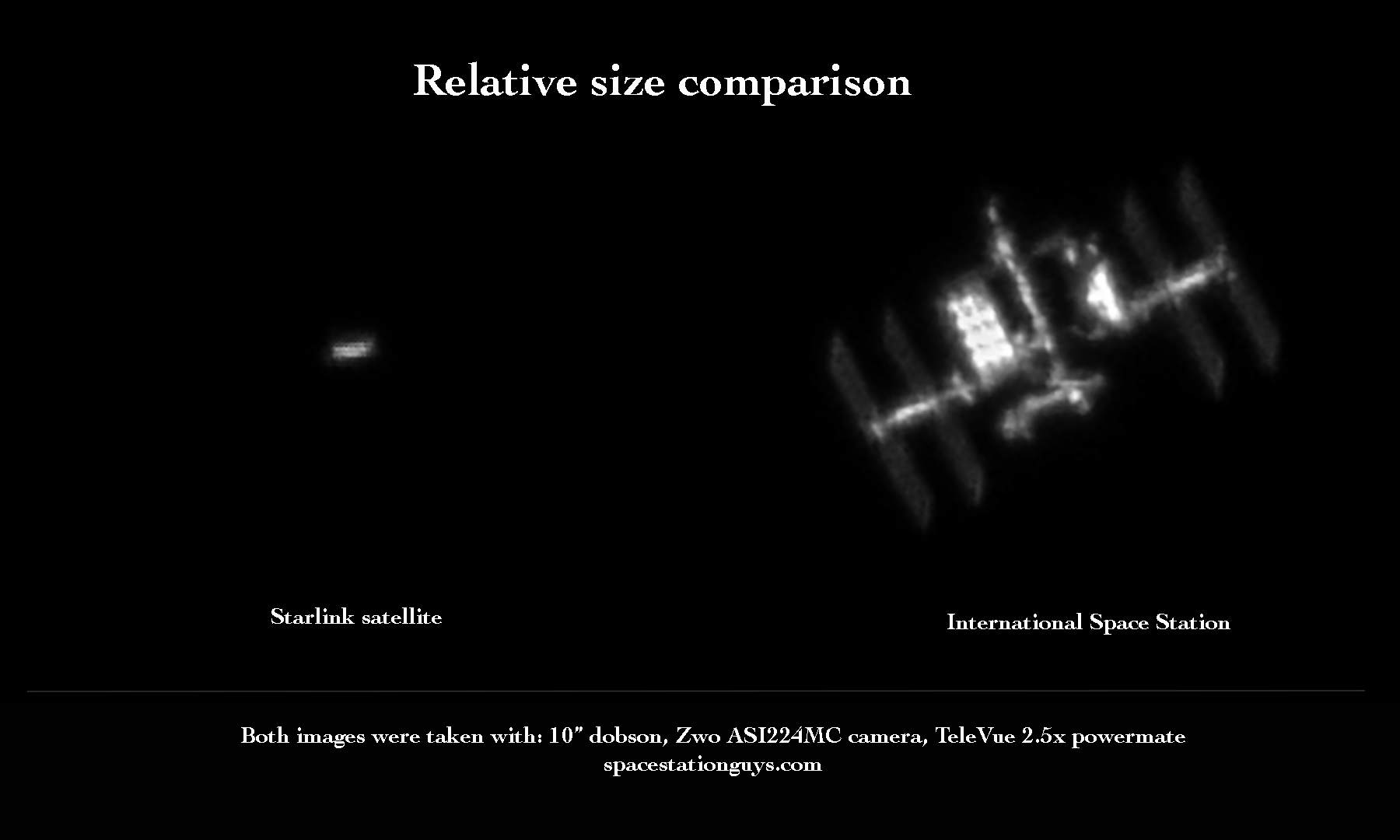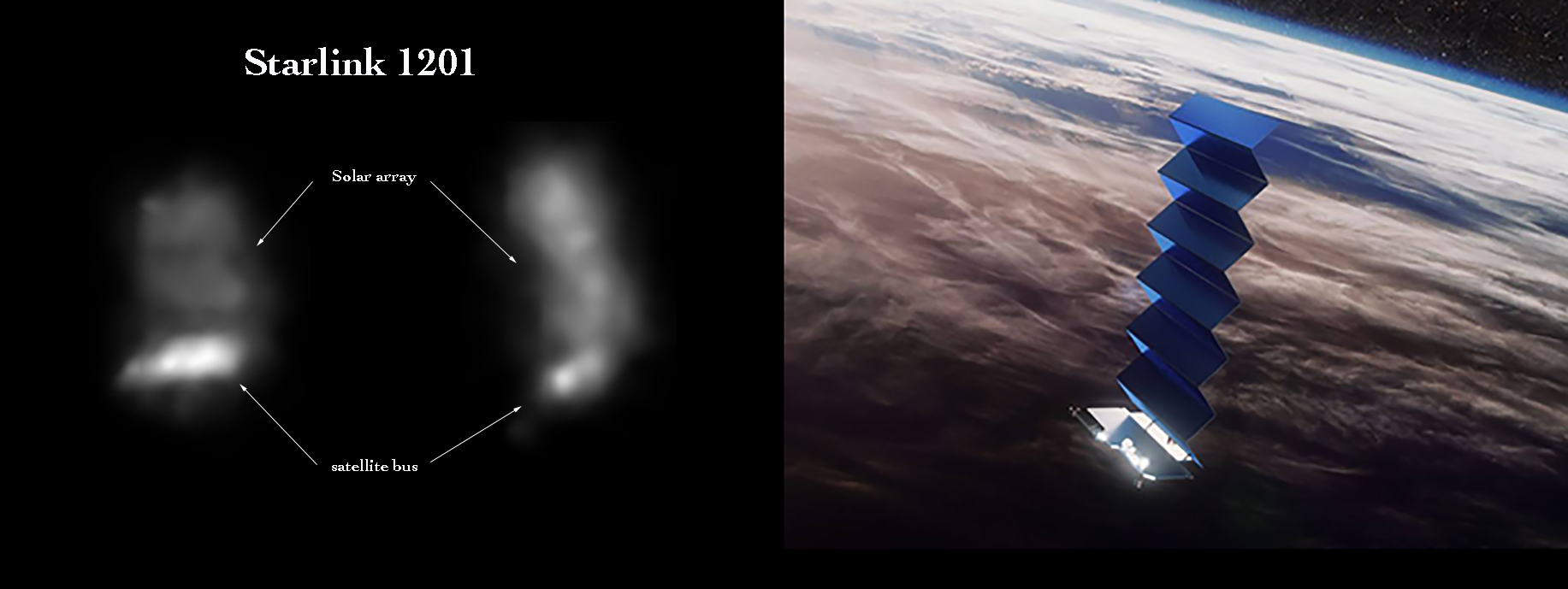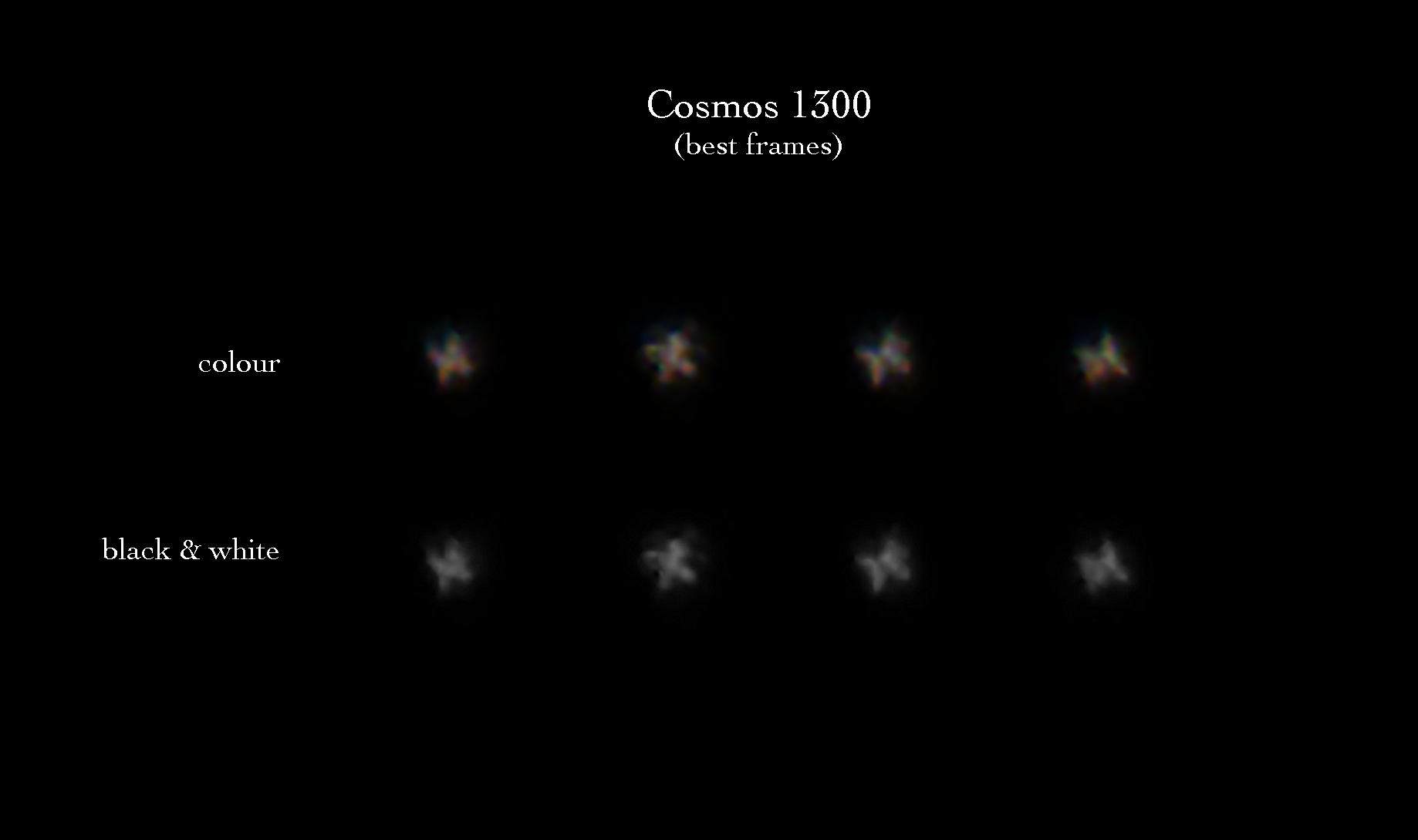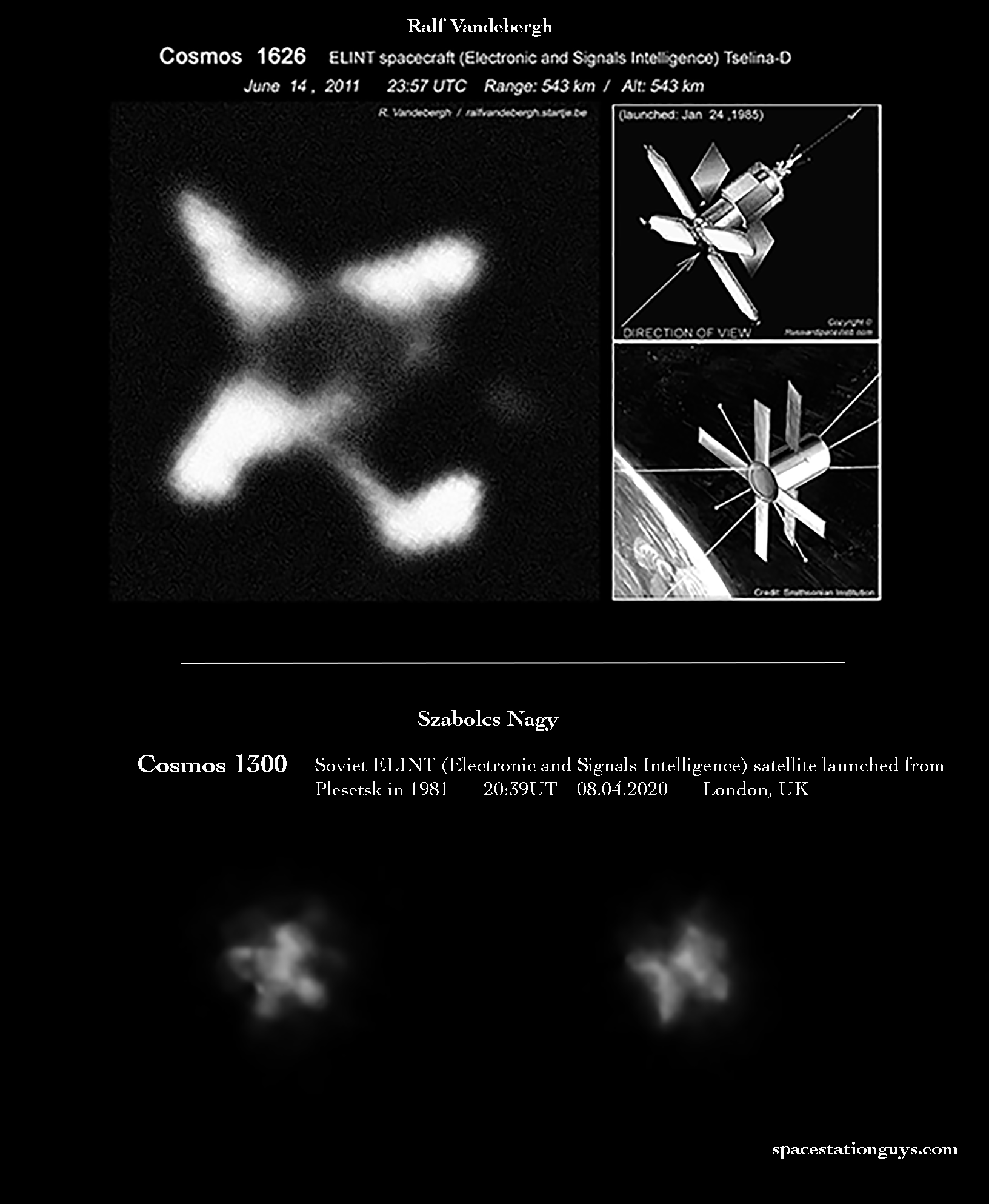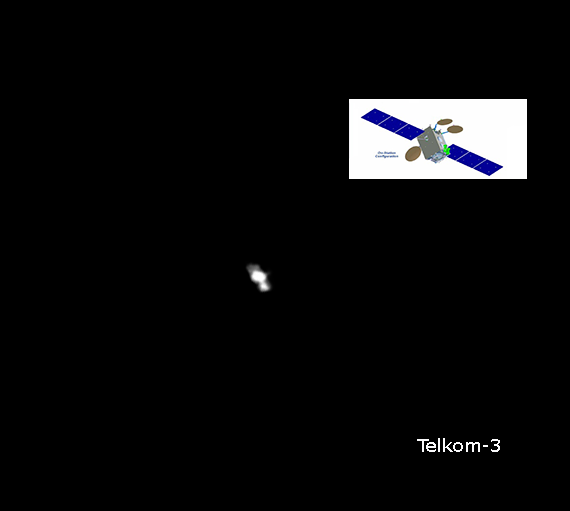SpaceX Starlink-18 (L19)
Photo on the left is from a previous mission, when SpaceX fitted cameras on the inside of the fairing halves. It happened to show exactly the same angle my camera captured the stack+upper stage.
Atlas Centaur Rocket Booster
(20.05.2020)
About the Atlas IIAS rocket
Atlas IIAS configuration
SpaceX Starlink-1125 satellite
(07.05.2020)
I’ve been waiting for the International Space Station which was due between 3:23-3:30am UT. I knew some Starlink satellites will be visible before ISS. I was ready with my setup, so when I spotted one I started shooting a 28 seconds long high frame rate video (just like I do ISS photography).
This satellite has been launched quite a while ago, it is at its final position (altitude and plane). One of the animations shows the altitude of the satellite varies between 550-565km. In theory this shouldn’t be this bright, but it was a naked eye object even from London! My first direct proof of the a Starlink satellite being at its final position being incredibly bright, easily visual magnitude +1/+2.
update
As Richard Cole rightly suggested:
The way I usually insert camera to my telescope is so, that it represents the correct alignment of objects in the sky. So let’s say the zones and belts of Jupiter is parallel with horizon at a give time, this way they will appear on the laptop screen matching reality. The reason I tell you this is because knowing this aspect of my result we know, that the orientation of the Starlink satellites are more or less accurate and matching how I would see then through an eyepiece. Here is my animation again.
What we see is that the satellite bus is facing toward the direction of travel. As Richard Cole points out rightly, at this stage it should be tilted 90º clockwise and satellite bus (baseplate) supposed to face Earth instead. So this might be a clue for why it was so bright, but these are speculation, conclusions drawn after seeing the current photo evidence.
Equipment
Skywatcher 250/1200 Flextube dobsonian telescope
Eq platform
Zwo ASI 224 MC colour camera
TeleVue 2.5x powermate
SpaceX Starlink 7 satellites 22 minutes after launch – close up photo
(22.04.2020)
This is one photo (1 frame) not a composite!The most surreal photographic experience ever! Starlink 7 was launched and I knew 22 mins (or so) it will fly above me. I did a preparation as I would do to an ISS imaging session. It went past at around 84 deg. above horizon, was bright as hell and when I looked back the frames….. couldn’t believe my eyes!
So you’ll see on this photo marked with arrows:
– Falcon-9 2nd stage
– a few Starlink satellites already separated from from the main bunch
– rest of the Starlink satellites which only started spreading
Image aquisition:
I always use my 10″ for ISS imaging (full equipment details at the bottom). I also always manually track the station, this works for me the best. I looked up the flyby forecast on Heavens Above website.Then I prepared for the flyby and once I captured a video, I broke it down to individual frames. This way I can sort out and handle each and every frames with ISS on it separately and get rid of the blank frames. For this I usually I use PIPP, a small but powerful software. But this case too many bright object and that confuses the algorithm, so had to do it all manually going trough each frame one by one (hundreds of frames).Once this is done, I keep the ones which aren’t affected by atmospheric disturbance too much.
More videos and animation in this video summary:
Equipment
Skywatcher 250/1200 Flextube dobsonian telescope
Eq platform
Zwo ASI 174 MM colour camera
TeleVue 2.5x powermate
SpaceX Falcon-9 rocket 2nd stage
(22.04.2020)
During the flyby of the Starlink 7 mission I could observe the Falcon-9 rocket 2nd stage alongside the many Starlink satellites. This is the first time I could observe and photograph it from my location.
Equipment
Skywatcher 250/1200 Flextube dobsonian telescope
Eq platform
Zwo ASI 174 MM colour camera
TeleVue 2.5x powermate
SpaceX Starlink satellite close up over London
(19.04.2020)
Equipment
Skywatcher 250/1200 Flextube dobsonian telescope
Eq platform
Zwo ASI 224 MC colour camera
TeleVue 2.5x powermate
SpaceX Starlink satellite close up over London
(08.04.2020)
On the 8th April I tried something I only occasionally did – some satellite hunting. Didn’t have a large field of view, plus Moon was rising, but at some point I bumped into a Starlink satellite. The rest of the newly launched ones were already by the time it darkened enough. So only a couple were expected and the thin haze did no favour. This is called ‘Starlink 1201’ and its max. elevation was 53º above horizon. Will definitely try it with more favourable passes, ideally shortly after launch.
I’m very pleased to see that the solar array and the satellite bus are clearly separate units on my shots. These 4 frames are the same object taken with a high frame rate camera. These were the sharpest. Not the best result, but the satellite wasn’t very close to my location.
Will give it a few try if Starlink satellites passing in the next few days.
Equipment
Skywatcher 250/1200 Flextube dobsonian telescope
Eq platform
Zwo ASI 224 MC colour camera
TeleVue 2.5x powermate
Cosmos 1300 (Tselina-D)
(08.04.2020)
It’s been long planned – on the 8th April I was hunting for satellites. This is most likely a Cosmos 1300 from 1981. Ralf took photos of an identical satellite in 2011, so I present you both shots. Conditions weren’t perfect, still amazing how details reveal themselves.
About the satellite
Cosmos 1300 was a Soviet ELINT (Electronic and Signals Intelligence) satellite launched from the Plesetsk cosmodrome.
From 1965 to 1967 two dedicated ELINT systems were tested: the Tselina and the Navy’s US. Both reached service, since the Ministry of Defence could not force a single system on the military services.
Tselina was developed by Yuzhnoye and consisted of two satellites: Tselina-O for general observations and Tselina-D for detailed observations. The Tselina-D took a long time to enter service due to delays in payload development and weight growth. The whole Tselina system was not operational until 1976. Constant improvement resulted in Tselina-O being abandoned in 1984 and all systems being put on Tselina-D.
Equipment
Skywatcher 250/1200 Flextube dobsonian telescope
Eq platform
Zwo ASI 224 MC colour camera
TeleVue 2.5x powermate
SpaceX Starlink satellites over London
(28.05.2019)
I was in Hungary when the whole Starlink project started and missed those few days when they were closely together. But I wanted to give it a try from London, despite the great light pollution. The flyby predictions were from Heavens Above, but since they keep changing their position in the sky it was not surprising they appeared 4-5 minutes later. They were not visible to naked eye, I only spotted them through my finderscope. I kept looking to the predicted area, slightly below Arcturus, was already giving it up when a Starlink satellite suddenly crossed my finderscope’s field of view. So I started recording and had to keep moving the scope upwards with the mount’s hand controller toward Arcturus (that is the reason why 2 or 3 satellites seems wobbly or not travelling in a straight line path).
Because the satellites were not following exactly the same path, instead drifting “upwards”. And they kept coming and coming! I get it, why the amateur astronomy community is so upset, they are bright. Not naked eye bright, definitely not from London, but they will be on images for sure!
The 23 Starlink satellite appeared between 21:46:08.00 UT and 21:48:33.00 UT from South-West London. The times mark when each satellite entered my field of view.
They did not appear this close to each other, this is an edited version of the original footage!
Predictions from Heavens Above
Equipment
Skywatcher 72/420 ED Apo refractor telescope
Skywatcher Allview mount
Zwo ASI 224 MC colour camera
Telkom-3
(27.03.2019)
A few minutes before ISS with docked Crew Dragon flew over London I have noticed a tumbling satellite with quite amount of flare effect, occasionally as bright as ISS. So I started shooting and this was the best frame. In July 2019 this doomed Telkom-3 satellite will make a few real close approach to Earth, at some point being as close as less than 300km. So I’m hoping to do a better run on this interesting object.
Equipment
Skywatcher 250/1200 Flextube dobsonian telescope
Eq platform
Zwo ASI 224 MC colour camera
TeleVue 2.5x powermate
